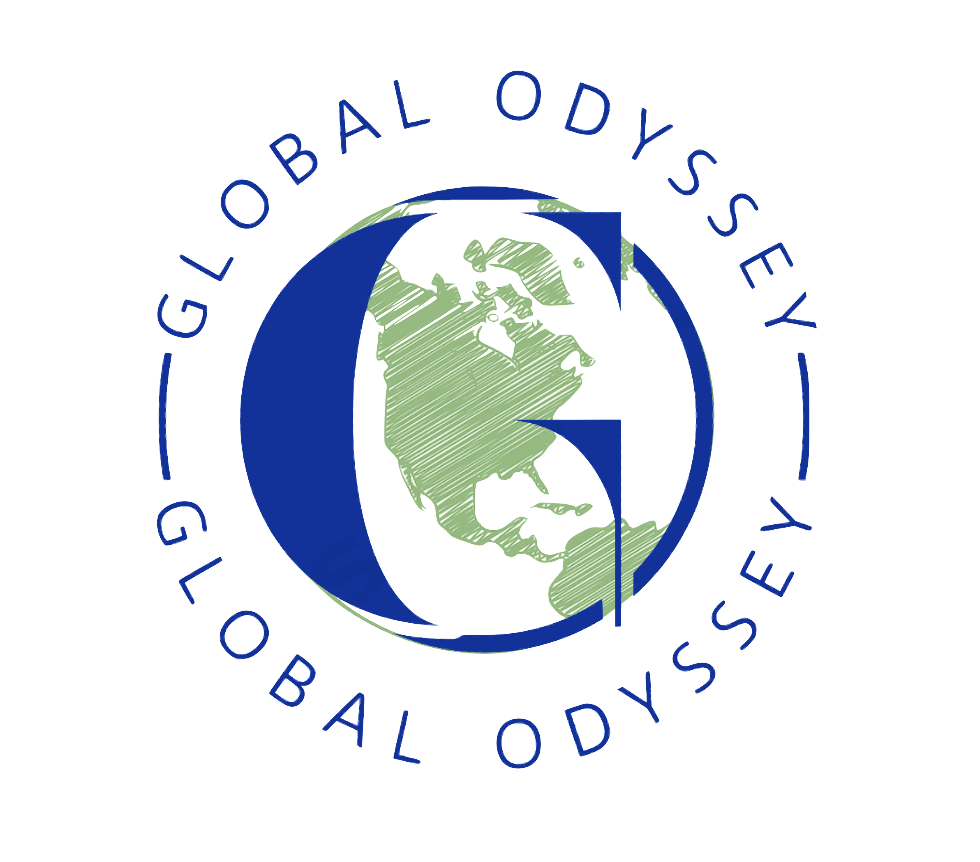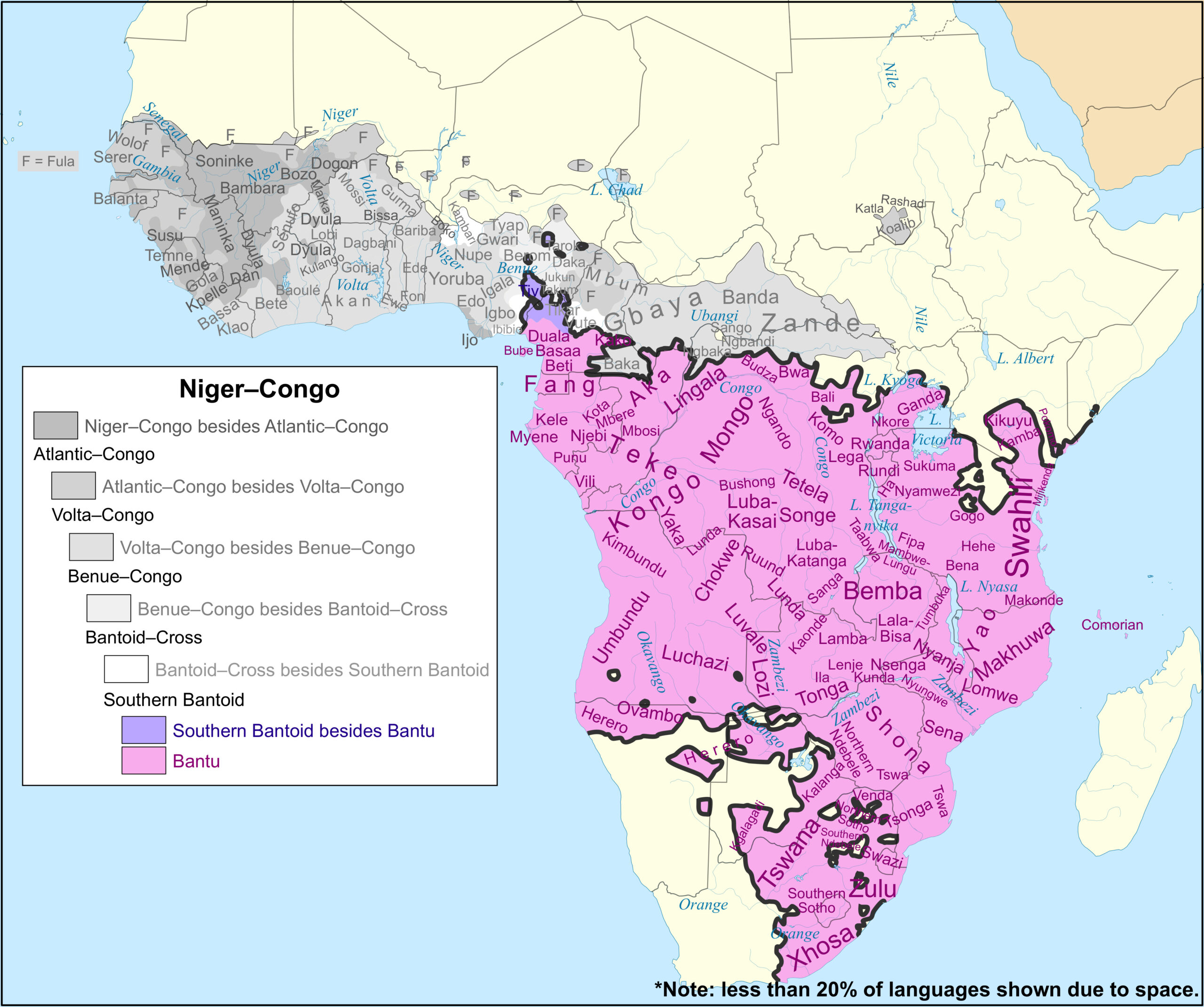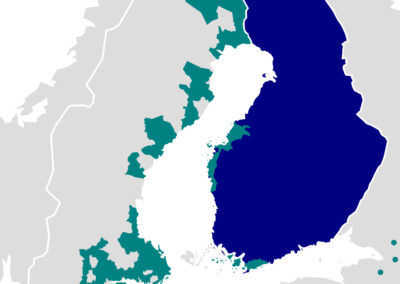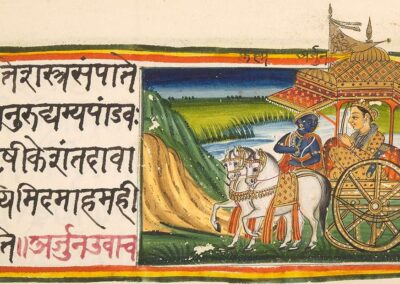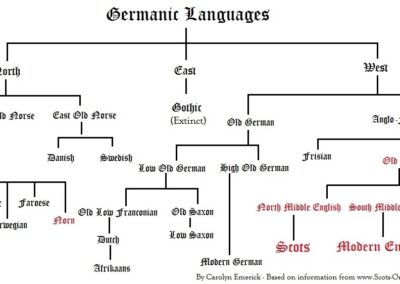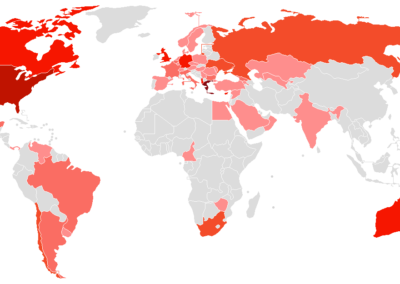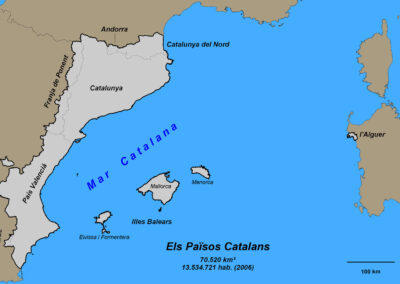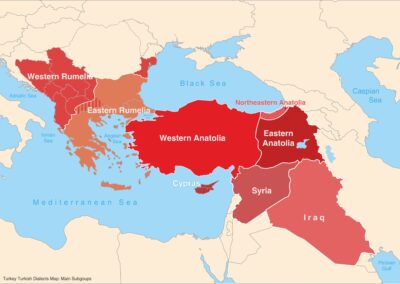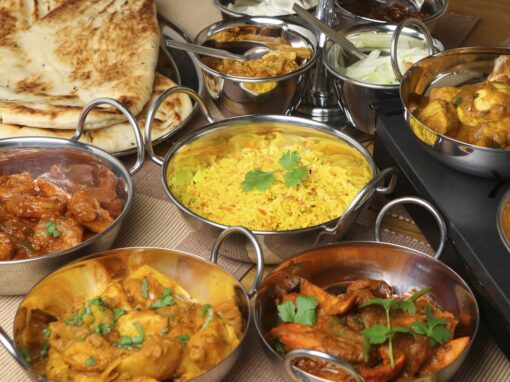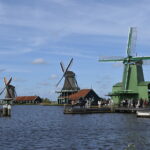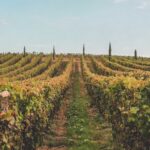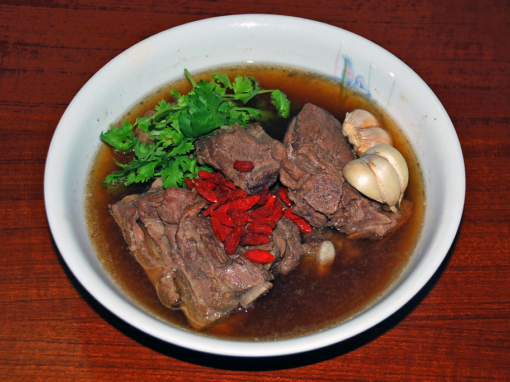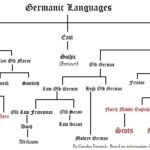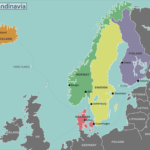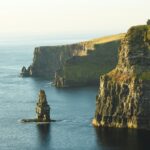The Bantu languages are a language family of around 600 languages spoken by the Bantu peoples in central, eastern, southern and southeast Africa.
They are a group of languages belonging to the Bantoid subgroup of the Benue-Congo branch of the Niger-Congo language family.
They are spoken over a vast area including a significant part of the African continent. They are spoken all the way from southern Cameroon eastward to Kenya and southward to the southernmost tip of the continent.
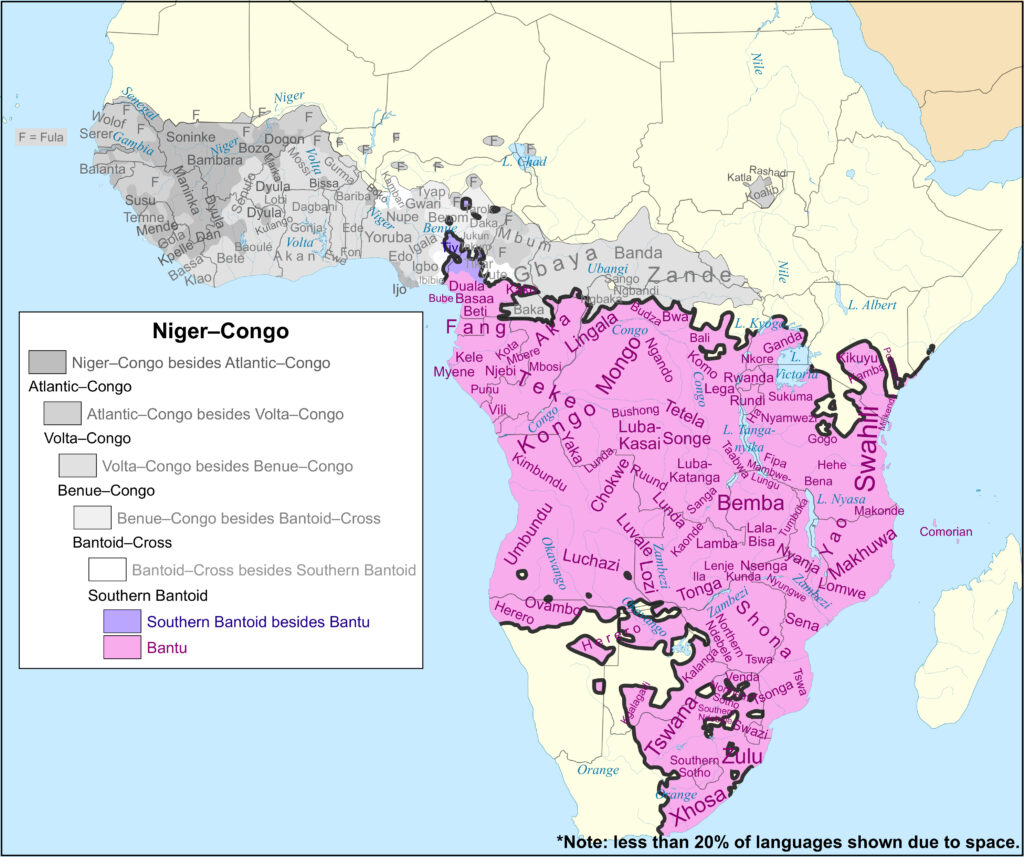
Map of where Southern Bantoid branch languages are spoken
The term Bantu essentially means ‘people’ and the language group’s original homeland is believed to be the region around modern-day Cameroon and Nigeria. From there Bantu-speaking communities started to migrate and spread out, reaching central, eastern and southern Africa over the course of several millennia.
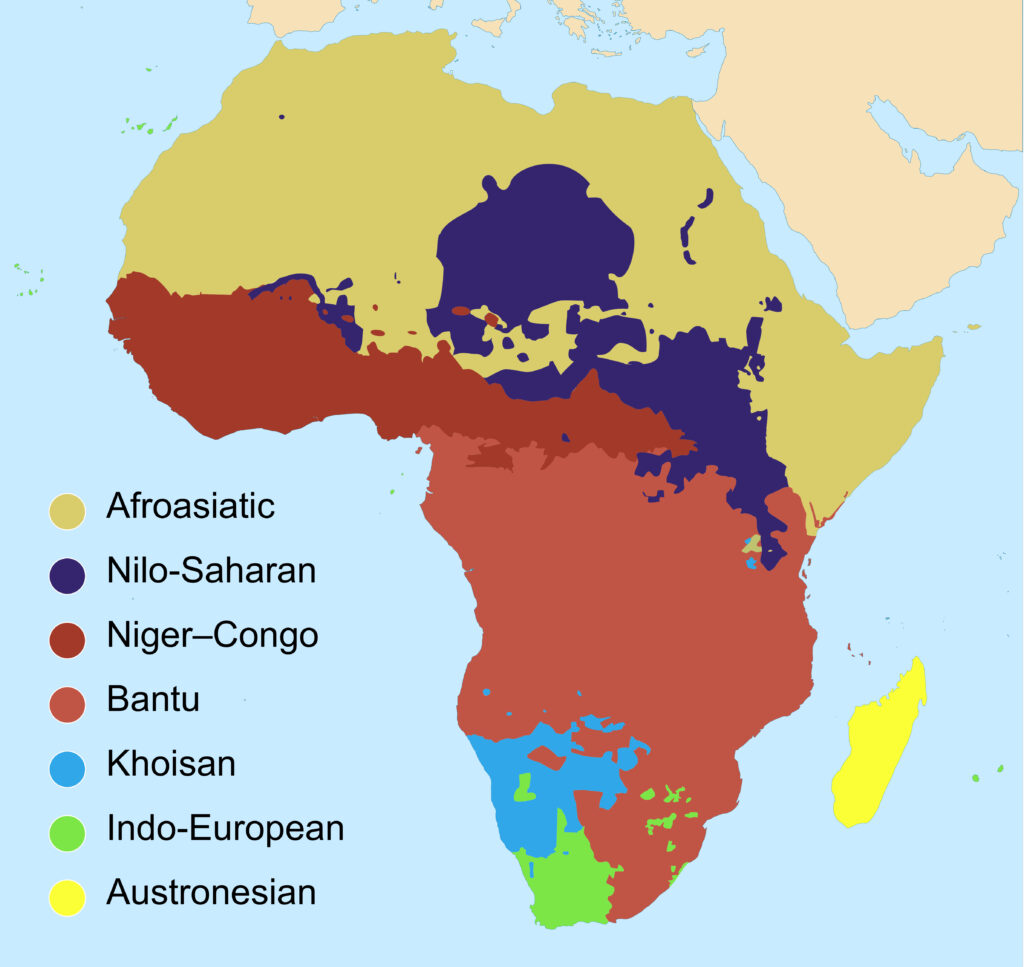
Map of language groups spoken in Africa (Google Creative Commons)
The total number of people who speak Bantu languages is estimated to be around 350 million which is around 30% of the total population of the African continent.
About one-sixth of Bantu language speakers and one-third of Bantu languages are found in the Democratic Republic of Congo in the heart of Africa.
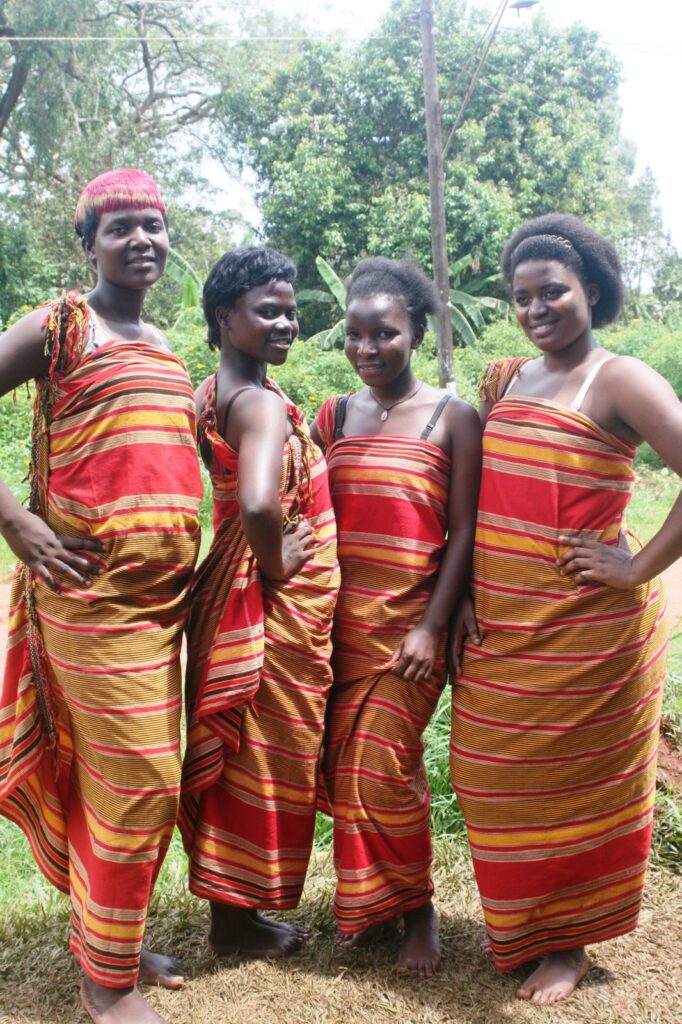
Bantu women (Google Creative Commons)
The most spoken Bantu language, by far, is Swahili which is estimated to have over 200 million native and second-language speakers. Most native speakers of the language can be found in Tanzania in eastern Africa. In Tanzania, Swahili is a national language while it is a common lingua franca (bridge language) across East Africa.
Other significant Bantu languages include Lingala with more than 20 million speakers in the Republic of Congo and the Democratic Republic of Congo while Zulu is the most widely-spoken home language in South Africa with 12 million speakers in the country.
Xhosa has over eight million speakers in South Africa and Zimbabwe while Shona has under ten million speakers. Xhosa is native to the Eastern Cape and Western Cape provinces of South Africa.
Meanwhile, the Sotho-Tswana languages (Sotho, Tswana and Pedi) have more than 15 million speakers found across Botswana, Lesotho, South Africa and Eswatini (also known as Swaziland).
In total, twelve Bantu languages are spoken by more than five million people including Rundi, Rwanda and Shona.
Kikuyu is native to the central region of Kenya while Luganda is the major language in Uganda.
The countries they are spoken in can be divided into geographical regions of the African continent:
- Central Africa: Democratic Republic of Congo, Gabon and Equatorial Guinea.
- East Africa: Kenya, Tanzania and Uganda.
- Southern Africa: Angola, Zambia, Malawi, Mozambique, Zimbabwe, Namibia, Botswana, South Africa, Lesotho and Eswatini.
In the Indian Ocean, Bantu languages are also spoken in the Comoros Islands and Madagascar. Malagasy, Madagascar’s national language, comes from the Barito group of the Bantu languages.
Madagascar is a country located off the eastern coast of mainland Africa
In terms of the linguistic features of Bantu languages, a variety of tonal systems are used and these may have a lexical or grammatical function.
They typically have a system of vowel harmony and use a series of prefixes to indicate tense, mood and aspect in verbs. They are also agglutinative which means they often use prefixes and suffixes to convey grammatical relations.
Historically, Bantu languages were oral however colonialism and Christian missionary activity led to many being transcribed using the Latin script.
Nowadays, some Bantu languages including Swahili and Zulu have millions of speakers and serve as important lingua francas but others only have a few thousand speakers and are at risk of extinction.
The Bantu languages are a fundamental part of cultural identity and belonging across this vast expanse of Africa and the many countries where they are spoken.
